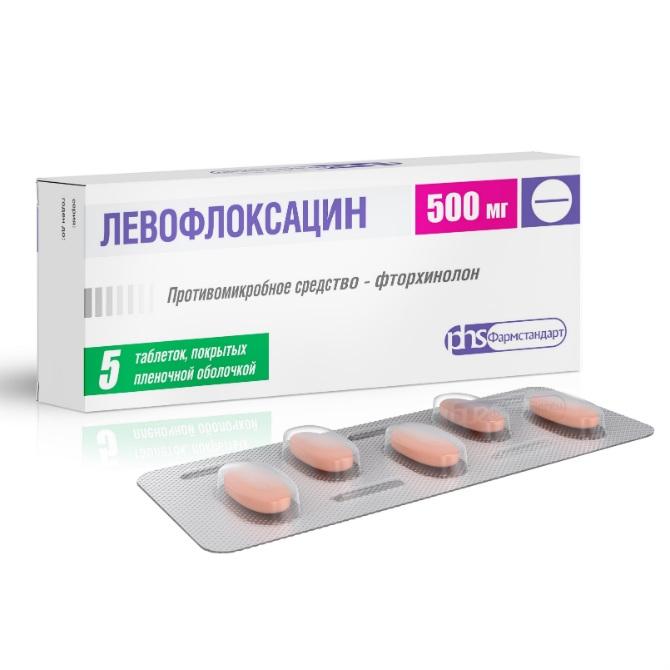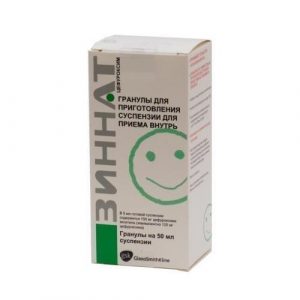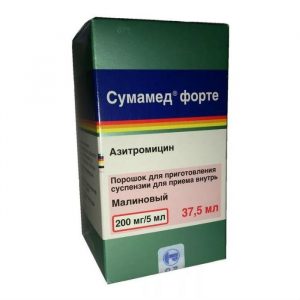Description
Latin name
LEVOFLOXACIN
Release form
Yellow film-coated tablets, round, biconvex in a cross section, two layers are visible.
Packing
5 pcs – blister packagings (1) – packs of cardboard.
5 pcs – blister packs (2) – packs of cardboard.
Pharmacological action
Optimum dosages of B vitamins are necessary to maintain the speed of the reaction and mental activity, energy metabolism in the cells and the stability of the nervous system.
Vitamin C strengthens the immune system and improves metabolism, neutralizes free radicals, exhibiting an antioxidant effect. Improves the absorption of iron in the small intestine. It positively affects folic acid metabolism, improves leukocyte function. Activates the formation of bone and connective tissue. It normalizes permeability and strengthens the walls of small blood vessels (capillaries). It disrupts the supercoiling and cross-linking of DNA breaks, and causes deep morphological changes in the cytoplasm and cell wall. In concentrations equivalent to or exceeding the minimum inhibitory concentrations (MIC), it most often has a bactericidal effect. The main mechanism for the development of resistance is associated with a mutation of the gyr-A gene with the possible development of cross-resistance between levofloxacin and other fluoroquinolones. Cross-resistance between levofloxacin and other classes of antibacterial drugs usually does not occur.
Sensitive microorganisms: aerobic gram-positive microorganisms – Corynebacterium diphtheriae, Enterococcus spp., including Enterococcus faecalis, Listeria monocytogenes, Staphylococcus spp. Propionibacterium spp., Veilonella spp. other microorganisms – Bartonella spp., Chlamydia pneumoniae, Chlamydia psittaci, Chlamydia trachomatis, Legionella pneumophila, Legionella spp., Mycobacterium leprae, Mycobacterium tuberculosis, Mycoplasma hominis, Mycoplasma pneumiae um apetumma rpica um apeta rmaapma erypma ermapetica rmoniappma ermapetica rmoniappma ermapetica rmoniappma ermapetica rmoniapma ermiapma ermiapma ermiapma ermiapma ermiapma ermiapma ermiapma ermiapma ermiapma ermiapma ermiapma ermiapma ermiapma ermiapma ermiapma
moderately sensitive microorganisms (MIC more than 4 mg / l): Aerobic Gram-positive microorganisms – Corynebacterium urealyticum, Corynebacterium xerosis, Enterococcus faecium, Staphylococcus epidermidis (methicillin-resistant strains), Staphylococcus haemolyticus (methicillin-resistant strains), aerobic gram-negative organisms – Burkhoideria cepacia, Campylobacter jejuni, Campylobacter coli anaerobic microorganisms – Bacteroides thetaiotaomicron, Bacteroides vulgatus, Bacteroides ovatus, Prevotella spp., equivalent or in excess of the minimum inhibitory concentration (MIC), most often has a bactericidal effect. The main mechanism for the development of resistance is associated with a mutation of the gyr-A gene with the possible development of cross-resistance between levofloxacin and other fluoroquinolones. Cross-resistance between levofloxacin and other classes of antibacterial drugs usually does not occur.
Indications
Infectious and inflammatory diseases caused by susceptible microorganisms:
– acute sinusitis
– exacerbation of chronic bronchitis
– community-acquired pneumonia
– complicated infections of the urinary tract (including pyelorrhoea infection) and soft tissue
– septicemia / bacteremia associated with the above indications
– intra-abdominal infection.
Contraindications
– hypersensitivity to levofloxacin or to other quinolones
– renal failure (with creatinine clearance less than 20 ml / min. – due to the inability to dose this dosage form)
– previous treatment – previous treatment – child and adolescence (up to 18 years)
– pregnancy and lactation.
Caution should be used in the elderly due to the high likelihood of a concomitant decrease in renal function, as well as in deficiency of glucose-6-phosphate dehydrogenase.
Use during pregnancy and lactation
Contraindicated in pregnancy and lactation.
Composition
1 tab.
levofloxacin hemihydrate 512.46 mg,
which corresponds to the content of levofloxacin 500 mg
Excipients: microcrystalline cellulose – 61.66 mg, hypromellose – 17.98 mg, croscarmellose sodium – 18.6 mg, polysorbate 80 – 3.1 mg, calcium stearate – 6.2 mg.
Shell composition: (hypromellose – 15 mg, hyprolose (hydroxypropyl cellulose) – 5.82 mg, talc – 5.78 mg, titanium dioxide – 3.26 mg, iron oxide yellow (yellow oxide) – 0.14 mg) or (dry film coating mixture containing hypromellose 50%, hyprolose (hydroxypropyl cellulose) 19.4%, talc 19.26%, titanium dioxide 10.87%, yellow iron oxide (yellow oxide) 0.47%) – 30 mg.
Side effects of
The frequency of a side effect is determined using
in the following table:
Frequency Appearance of side effects of
often: in 1-10 patients out of 100
sometimes: less than in 1 patient out of 100
rarely: less than in 1 patient out of 1,000
is very rare: less than 1 patient out of 10,000
has some cases less than 0.01%
Allergic reactions: sometimes itching and redness of the skin are rare – general hypersensitivity reactions (anaphylactic and anaphylactoid reactions) with such symptoms, like urticaria, narrowing of the bronchi and possibly – severe choking very rarely – swelling of the skin and mucous membranes (for example, in the face and throat), a sudden drop in blood pressure and shock, hypersensitivity to solar and ultraviolet radiation (see. Special instructions), allergic pneumonitis, vasculitis in some cases – severe rashes on the skin with the formation of blisters, for example, Stevens-Johnson syndrome, toxic epidermal necrolysis (Lyell’s syndrome) and exudative erythema multiforme. General hypersensitivity reactions can sometimes be preceded by milder skin reactions. The above reactions may develop after the first dose several minutes or hours after administration of the drug.
From the digestive system: often – nausea, diarrhea, increased activity of liver enzymes (for example, alanine aminotransferase and aspartate aminotransferase) sometimes – loss of appetite, vomiting, abdominal pain, digestive disorders rarely – diarrhea with an admixture of blood, which in very rare cases can be a sign of intestinal inflammation and even pseudomembranous colitis (see. Special instructions).
From the side of metabolism: very rarely – a decrease in blood glucose concentration, which is of particular importance for patients with diabetes mellitus (possible signs of hypoglycemia: increased appetite, nervousness, perspiration, trembling). The experience of using other quinolones suggests that they can cause exacerbation of porphyria in patients already suffering from this disease. A similar effect is not excluded with the use of the drug levofloxacin.
From the nervous system: sometimes – headache, dizziness and / or numbness, drowsiness, sleep disturbances rarely – anxiety, paresthesia in the hands, trembling, psychotic reactions such as hallucinations and depressions, excited state, convulsions and confusion are very rare – impaired vision and hearing, impaired taste sensitivity and smell, decreased tactile sensitivity.
From the cardiovascular system: rarely – increased heart rate, lowering blood pressure very rarely – vascular (shock-like) collapse in some cases – lengthening of the QT interval.
From the musculoskeletal system: rarely – tendon lesions (including tendonitis), joint and muscle pain very rarely – tendon rupture (e.g., Achilles tendon), this side effect can occur within 48 hours after the start of treatment and may be bilateral in nature ( see Special Instructions), muscle weakness, which is of particular importance for patients with bulbar syndrome in some cases – muscle damage (rhabdomyolysis).
From the urinary system: rarely – increased levels of bilirubin and creatinine in serum are very rare – impaired renal function up to acute renal failure, interstitial nephritis.
From the hemopoietic organs: sometimes – an increase in the number of eosinophils, a decrease in the number of white blood cells rarely – neutropenia, thrombocytopenia, which can be accompanied by increased bleeding very rarely – agranulocytosis and the development of severe infections (persistent or recurrent fever, worsening of well-being) in some cases – hemolytic pancytopenia anemia.
Others: sometimes – general weakness is very rare – fever.
Any antibiotic therapy can cause changes in microflora, which is normally present in humans. For this reason, increased reproduction of bacteria and fungi that are resistant to the antibiotic used may occur, which in rare cases may require additional treatment.
Drug Interaction
There has been a reported decrease in seizure threshold while using quinolones and substances capable of lowering the cerebral seizure threshold. This applies equally to the simultaneous use of quinolones and theophylline.
The effect of the drug Levofloxacin is significantly attenuated when co-administered with sucralfate. The same thing happens with the simultaneous use of magnesium or aluminum-containing antacids, as well as iron salts. Levofloxacin should be taken at least 2 h before or 2 h after administration of these agents. No interaction was found with calcium carbonate.
When co-administered with vitamin K antagonists, blood clotting control is required.
The elimination (renal clearance) of levofloxacin is slightly slowed by cimetidine and probenicide. It should be noted that this interaction has virtually no clinical significance. However, with the simultaneous use of probenicide and cimetidine drugs, blocking the specific route of excretion (tubular secretion), treatment with levofloxacin should be performed with caution. This applies primarily to patients with impaired renal function.
Levofloxacin slightly increases the elimination half-life of cyclosporine.
Taking glucocorticosteroids increases the risk of tendon rupture.
Overdose
Symptoms of an overdose of Levofloxacin are manifested at the level of the CNS (confusion, dizziness, impaired consciousness and seizures by type of epipizad). In addition, gastrointestinal disorders (such as nausea) and erosive mucosal lesions, QT lengthening may be noted.
Treatment should be symptomatic. Levofloxacin is not excreted by dialysis (hemodialysis, peritoneal dialysis and permanent peritoneal dialysis). There is no specific antidote.
Storage conditions
List B. Keep out of the reach of children, dry and protected from light, at a temperature not exceeding 25 ° C.
Expiration
2 years. Do not use after the expiry date.
Deystvuyuschee substances
Levofloxacin



